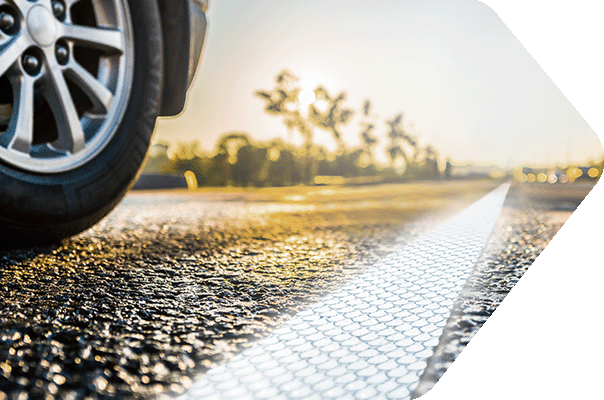Are Europe's roads ready for CCAM? Part two.
Paint a positive picture.

Harald Mosböck SWARCO’s vice president of Road Marking Systems for Europe, and also the European Road Federation’s current president, takes his turn to answer the loaded question that was already skilfully handled by Steve Penn and Daniel Lenczowski in the DriveOn Magazin (interview). This time the focus is on road markings.
Are Europe's roads ready for CCAM? It’s a good question, but perhaps the bigger question is if they aren’t, why are they not ready… and when will they be ready?
“I can tell you what’s happening in Europe if we are talking about road markings and automated driving,” says Harald. “In autumn 2019 the European Council decided that Europe must do something and that we should not fall back in comparison with Asia and the US. As part of the 3rd mobility package of the EC the Council voted for two legislations that time: one was the general safety regulations, and the other was the road infrastructure safety management directive,” he explains.
VISIBLE IMPROVEMENTS
General safety regulations have made it mandatory for every new car sold in the European Union from July 2024 to be equipped with several sensors and safety features, for example, emergency lane keeping assistance, and this is where road markings play a leading role. The visibility of road markings becomes more crucial.
"Germany is probably the only large European country whose performance criteria for lane markings focuses very much on visibility in rainy conditions."
“The positive example here is Germany and the national performance requirements for Highways,” explains Harald. “Germany is probably the only large European country whose performance criteria for lane markings focuses very much on visibility on wet roads in rainy conditions.
“My hope is that road maintenance budgets will be adjusted in line with the inflation rate of the last few years in order to maintain road infrastructure properly. But if we truly want to support the deployment of cooperative connected and autonomous vehicles then the levels of funding and investment needs to be increased.”
PREPARE FOR PROGRESS
So - much more needs to be done. Could do better. So what does Harald think can be done and whose responsibility is it to actually do it?
“The aviation and maritime industries are built upon a global framework of laws and regulations and while there have been attempts to harmonize road network organization and standards, significant differences remain.,” he replies.
"Our goal is to optimize the role of road markings so that cameras can ‘see’ lane lines, perceive pedestrian crossings and identify designated bike lanes."
“Our goal is to optimize the role of road markings so that cameras can ‘see’ lane lines, perceive pedestrian crossings and identify designated bike lanes. Consequently this will help to maximize the value of automated driving technologies, to create a safer, sustainable and more efficient road network.”
Harald’s primary concern, however, is that despite the progress being made all over the continent, in terms of road-readiness Europe is in danger of losing touch with China and the United States. In China thousands of kilometres of roads are in the process of being prepared for fully automated vehicles.
“If Europe is to remain competitive in global markets while advancing climate objectives, we cannot fall behind when it comes to automated freight. We need to at least remain on par with the United States and China.”

